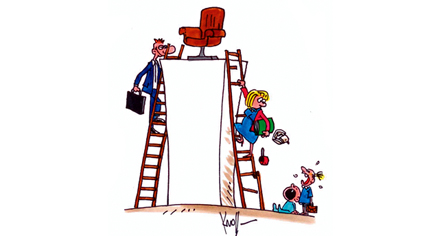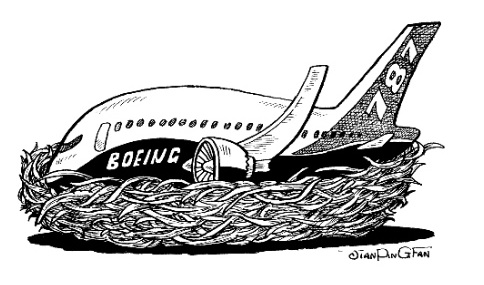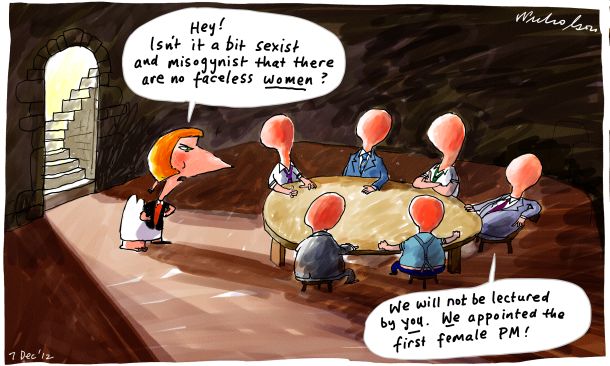Asghar Zack writes: Advances in health and social welfare in the 20th century ushered in a golden age for humanity. We’re living longer and in better health than ever before. Someone born in London today, for example, could expect to live 30 years longer than a counterpart did in 1900 – and will have access to pensions as well as universal healthcare provisions.
These advances have been a victim of their own success, however, and the downside is that ageing populations mean more pressure on resources, particularly on pensions and healthcare.
Amid all of this, we often overlook the idea that the new generation of older persons are a powerful resource. As a healthier group, they have the potential to contribute to not just their own well-being but also to sustain a greater economic and social prosperity for society as a whole.
Central to this is the idea of active and healthy ageing – the process of opening up opportunities and participation for older people and making quality of life better. As the World Health Organisation says: “Active” refers to continuing participation in social, economic, cultural, spiritual and civic affairs, not just the ability to be physically active or to participate in the labour force. Active Aging
Which countries are doing best? The pro-family culture of Italy promotes care provision for grandchildren, while the Fit2Work initiative in Austria helps to maintain and improve the employability of employees and avoid premature withdrawal from the labour market due to sickness and work-related illness. Zero-hours contracts in the UK have come under criticism, but they have contributed to the kind of labour market flexibility that employers prefer in hiring older workers.

The indicators, including three for financial security. AAI
We can also break down this information separately for men and women to see what progress could be achieved simply by closing gender gaps. And, using the AAI toolkit, we can define the goalposts for countries to aspire for.
The figure below illustrates the position of 28 European Union (EU) Member States using the latest data available (corresponding mainly to 2012).

How to Achieve Gender Equity in Pay
Jena McGregor writes: Salesforce.com CEO Marc Benioff is tackling yet another social issue: the gender pay gap. Benioff says he’s methodically combing through the pay of all 16,000 employees of his cloud-based software company to make sure his male and female employees are compensated fairly.
He’s already given some women raises after finding differences in their pay, and he expects to hand out more. Benioff’s move has been called a “radical step” and a “brilliantly simple” way to close the gap. Yet research has also shown that it’s likely quite effective at improving the overall ranks of women at the company, too — perhaps even more so than traditional benefits designed to attract and retain women.
In a study released in November, the consulting firm Mercer asked 164 companies about their benefits and human resources tactics. One of the big findings from its results was that companies with flexible work policies or maternity leave benefits were actually linked with a slower promotion of women into top ranks. The explanation: Such benefits can lead to a check-the-box mentality, in which companies think they’ve done enough to help women along.
Two variables appear to have a positive impact on both current and future gender diversity. One was the involvement of company leaders and men in diversity programs; the other was having a team responsible for pay equity and a process that statistically examines any wage gaps
they discover.
Benioff’s pay initiative is reportedly part of a program called Women’s Surge, designed to help improve the ranks of women at the company, where 85 percent of leaders and 71 percent of the overall workforce are men. The program includes efforts to ensure that women make up at least 30 percent of all meetings and that female candidates are evaluated for new hires and promotions. A team at Salesforce is also using its own analytics software to examine the salary data, determine whether there is a gap
and surface the factors influencing it, according to Business Insider.
Salesforce isn’t alone in methodically reviewing the company’s potential gender pay gap. Mercer’s study found that 52 percent of the 164 companies that responded said they have a dedicated team for analyzing any salary differences between men and women.
Still, the combined punch — having not only a rigorous process for analyzing gender pay data, but an involved CEO who is willing to talk openly about the issue — could end up being very powerful.
Benioff’s public leadership on this from the CEO perch sets the highest bar yet for more companies to reach.
A Wonderful, Modern-Day Marriage Ends
 SurveyMonkey chief executive officer Dave Goldberg died on May 1. Goldberg, who was 47 and had a reputation for being a nice guy in both an area and an industry where not everyone makes that effort.
SurveyMonkey chief executive officer Dave Goldberg died on May 1. Goldberg, who was 47 and had a reputation for being a nice guy in both an area and an industry where not everyone makes that effort.
Goldberg was more than a tech executive; he was also the husband of Facebook chief operating officer Sheryl Sandberg, with whom he had two children. For devotees of Sandberg’s leadership bestseller, “Lean In: Women, Work, and The Will to Lead,” which counseled women to follow their ambitions, Goldberg represented the other side of that coin — a rare breed of modern-day spouse. To lean in, it’s helpful to have a spouse who prioritizes both partners’ careers equally, and who’s willing to take up the slack at home.
The national debate about working mothers’ success in business and other professions has always centered on anecdotes. Sandberg, as one of the most prominent women in Silicon Valley, at the helm of a high-profile company, makes for a great story about how far a woman can go. Any woman — any person — who aspires to a top-level career can look up to her. That’s why “Lean In” became a runaway phenomenon, sparking debates and spawning a movement to change the conversation around women and leadership by, among other things, banning the word “bossy” to describe assertive girls.
By all accounts, Goldberg became one of Sandberg’s key advantages as she moved from Harvard to increasingly responsible posts at the U.S. Treasury Department, Google and then Facebook, while balancing motherhood. Reports indicate the pair considered both their careers equally when making decisions, which led to two stellar resumes — a classic Power Couple.
Mention this arrangement to a working mother, especially a highly-educated, high-potential woman from the same demographic as Sandberg, and the reaction is usually a rueful “lucky her.”
What helps as a woman is climbing the ladder at work, traveling frequently and staying late at the office — especially once she has children? A supportive, involved spouse. One who not only listens and empathizes, but also leaves the office at 4 p.m. to pick up Junior for soccer, or spends a weekend in a school gym waiting for a child to be done with chess, or lacrosse, or the science fair.
In our mobile sharing economy, an increasing number of to-do items can be outsourced and virtualized, but some things must be done in person. These are the mundane, time-consuming tasks of running a family that virtually always fall to the mother, unless the father is at home full- time (if there are two mothers, typically one takes on these responsibilities).
Behind any mother who’s in charge at work is usually someone who fills this role: a stay-at-home spouse, a trusted nanny, or even a grandparent (see Michelle Obama’s mother, Marian Robinson, who moved into the White House to look after her granddaughters).
The advantage of an equal spouse, one who’s committed to advancing both partners’ careers, is that logistics, business trips and emergencies become the problem of both parents.
The statistics are clear: women are more than half of undergraduates, and at top business schools they make up about a third of MBA students. Getting the most capable of them into positions as responsible as Sandberg’s may take a lot more husbands like the late Dave Goldberg.
Entpreneur Alert: Women Vinters or Just Vinters?
Reporting by Lettie Teague: This spring, half the graduates of the University of California’s prestigious viticulture school were women up from a third in 1999.
Women have been successful in their own wine businesses in Napa and Sonoma Counties. Godmother of them all is Merry Edwards, who started in Mount Eden Vineyards in 1974 and was a founder of Mantanzas Creek WInery in Sonoma in 1977. Edwards turned out terrific Sauvignon Blancs and Merlots. When she started her own winery shre produced polished Pinot Noirs.
After 40 years in the business, she laughs when people say, “Wow, women can do this.” Women come to her for inspiration, but her advice is similar to others who talk to women starting up. “Weak women aren’t going to make it anywhere.”
She helped start a day-care center at Mantazas Creek. Male wine makers had often told her they didn’t know how to deal with women. That’s why many women have struck out on their own.
Jennifer Porembski remarked that the work was physical: Rolling barrels and pulling hoses. Part of a job interview can be a demonstration of hoisting barrels. There’s also tedium and it’s hot and dusty.
Yet a woman was Napa Valley’s Grape Grower of the Year in 2014.
Some vinters remarked that the difference between men and women in the field was only in the minds of journalists. One recalled being asked how women liked growing masculine grapes like Syrah.
Many women vinters in Sonoma and Napa Counties felt that the field was wide open for women. And men too.
Some US Senate Democrats Vote for TPP
The Rocky Road to Globaliation
Alexander Bolton writes: Washington Sen. Patty Murray is breaking with the rest of the Senate Democratic leadership over trade legislation.
Murray supports granting President Obama fast-track authority to negotiate trade deals, such as the Trans-Pacific Partnership. She also favors moving the fast-track measure before the Senate recesses for its Memorial Day break. But other Democratic leaders oppose fast-track.
Senate Democratic Leader Harry Reid (Nev.) has vowed to delay it until Republicans lay out a clear path for passing an extension of the Highway Trust Fund and the National Security Agency’s surveillance authority in the next two weeks.
Nearly 40 percent of Washington state’s jobs are tied to exports, according to local business leaders, and she doesn’t want to play with fire when she’s facing reelection next year.
Senate Democratic Whip Dick Durbin (Ill.) said Tuesday there are “major challenges” that give him pause over granting Obama fast-track authority, and noted he voted against a similar bill in 2002.
Murray and Durbin could face each other for the whip post at the end of this Congress.
Durbin said he agrees with Reid that trade legislation should not move until Republicans lay out a clear plan for highway funding and surveillance authority.
New York Sen. Charles Schumer, the third-ranking member of the Senate Democratic leadership, who is a lock to replace Reid as the Senate’s top Democrat in 2017, voted against TPA in the Finance Committee.
Murray downplayed tensions with other Democratic leaders over trade.
“We all accept that we come from different regions and different states,” she said.
Kris Johnson, president and CEO of the Association of Washington Business, said she hails from one of the most trade-dependent states in the country.
“Forty percent of jobs in Washington state are tied to trade in one manner or another,” he said. “I think last year alone we set an all-time high record of just over $100 billion in exports.” He said Washington exports more per capita than any other state except for Louisiana, adding that the local aerospace, technology and agriculture industries depend on trade.
Microsoft is headquartered in Redmond, Wash., and Boeing employs more than 80,000 people across the state.
Sen. Maria Cantwell (D), Murray’s home-state colleague, said she will vote for fast-track if it moves with an extension of the Export-Import Bank and other measures.
Yellen on Finance and Society
She also noted that the Fed was watching the issue closely.
“I would highlight that equity market valuations at this point generally are quite high,” Yellen said, according to Reuters. “There are potential dangers there.”
Yellen also made note of the risks to open-ended mutual funds, Reuters reported, particularly dangers to liquidity if redemptions rose.
Banking regulators are remaining “watchful” for any areas where further reforms may be needed, she said in remarks at a financial conference.
Yellen cited the need to address the problem of “too big to fail”—the perception among investors that some institutions are so large that the government will step in and save them if they get into trouble.
She said the Fed and other regulators are taking steps to make sure that the collapse of even very large banking institutions can be handled in ways that don’t jeopardize the stability of the entire system.
Yellen’s comments came in a joint appearance with International Monetary Fund Managing Director Christine Lagarde at a conference sponsored by the Institute for New Economic Thinking.
Lagarde told the group that a recent IMF report found that risks to financial stability around the globe are rising with increasing risks at non-bank financial institutions and in emerging market countries.
“We need to build a financial system that is both more ethical and oriented more to the needs of the real economy—a financial system that serves society and not the other way around,” Lagarde said.
Yellen said a well-functioning financial sector promotes job creation, innovation and economic growth but that problems arise when the incentives become distorted, prompting bank executives to pursue risky strategies to increase profits.
“Unfortunately, in the years preceding the financial crisis, all too many firms took on risks they could neither measure nor manage,” she said.
“The result was the most severe financial crisis and economic downturn since the Great Depression,” the Fed chief said, noting that 9 million American lost their jobs and roughly twice that many lost their homes.
Anat Admati: FInance and Society
John Cassidy talks to Anat Admati about her conference in Washington on Finance and Society. Women speakers dominate: Janet Yellen, Elizabeth Warren and Christine Lagarde.
The title of the conference is “Finance & Society,” which is also the name of a course you teach at Stanford Business School. Is that where you got the idea for holding a conference?
AA: I’ve been working on both at the same time. The course and the conference share the objective of engaging more people in an informed discussion of how finance can best serve society and how to improve the system, which is currently distorted and dangerous, due to ineffective regulations.
What do you hope the conference will achieve?
AA: I hope it helps to frame and focus the discussion of these important issues, to expose the challenges, and to cause people, especially those who can impact policy, to try and improve the financial system. I view this discussion—done as broadly as possible and with as many people as possible involved—as critically important, because the financial system is fraught with conflicts of interest and lacks basic rules of accountability. Yet the issues are widely misunderstood, and the policy debate is muddled. I hope the conference, as well as the course and other efforts, helps to change this situation.
So how did the conference actually come about?
The concept of the conference started evolving about two years ago. Eventually, three economists (from Iceland, Switzerland, and the I.M.F.) joined me to try and make it happen. Last June, I shared the idea with Rob Johnson, the president of INET (the Institute for New Economic Thinking). He and others at INET were enthusiastic, and we have been collaborating with them to put it on.
Why did you decide to make it an all-female event?
AA: We didn’t actually set out to have all female speakers. But we wanted to highlight and celebrate the fact that there are now more—indeed many—women in leadership positions who can bring important insights to the discussion. So we started by creating the theme, and the content, and then used our “girls’ network” to invite women who could make the event powerful and impactful. As it happened, we never ran out of women we wanted to invite. In this regard, I should perhaps direct you to Justice Ruth Bader Ginsburg’s answer to the question of when there would be enough women on the Supreme Court: “When there are nine.”
You’ve got an all-star lineup.
AA: It took some effort to get commitments and coördinate a date with Janet Yellen and Christine Lagarde. But once we had that (which luckily also worked for Senator Warren) it was remarkably easy to get the others to come. The response was very enthusiastic.
What does it mean that, today, three of the most important economic and financial policymakers are female—and that coming up behind them are lots of other very influential women
AA: The fact that there are more women in influential positions means that there is progress, with more role models, and reason to celebrate. Having women deliver great content and insights on important issues is the best way of celebrating the progress.
The men who were running the financial world in the run-up to 2008 made a mess of things. Lots of people felt it was time for a change.
AA: I haven’t noticed significant change within the financial industry. There is a pervasive sens of entitlement, with massive lobbying efforts and virtually the same practices as before.
Beyond highlighting women, was there any specific principle behind the types of speakers you chose?
AA: We avoided inviting people who work for private, for-profit financial institutions, whose interests are sometimes in direct conflict with those of the rest of society. My experience is that they often make vague, perfunctory, or, worse, misleading statements, which muddle the debate and waste valuable time.
Spin is not unique to the private sector, of course. Policymakers and central bankers may also portray the situation, and their own efforts, in a better light than is appropriate. But policymakers hold the key to improving the system, and I think we have enough speakers with no institutional constraints to make sure that the discussion gets at the underlying issues in some depth.
Senator Warren has made clear that she hopes issues relating to finance and Wall Street figure prominently in the 2016 campaign. How important has she been in highlighting these topics and keeping them on the political agenda?
AA: She has been extremely important. I found it remarkable and dismaying that financial reform has not really been on the agenda in the past two elections, 2012 and 2014. It appears that money and lobbying corrupts politicians from both parties.
In your own work, you’ve focussed on huge financial institutions. I’m sure you’ll talk about this more in your remarks at the conference, but what is the single biggest outstanding issue? Too big to fail? Derivatives? Governance? Something else?
AA: These are related and interlocked problems that boil down to a single overriding issue, namely the ability of people in the financial industry, and especially at the largest institutions, to take and hide excessive, unnecessary risk that benefits them and harms the public. The fault lies with policymakers who fail to set and enforce appropriate rules. Some regulations that could be highly beneficial are badly designed and insufficient, while others that have been implemented are wasteful and counterproductive. And accountability is lacking throughout this system, including accountability for policymakers.
In addition to the keynote speeches and Q. & A.s, the conference will feature panel sessions on governance and politics, credit distortions, and financial regulations, all of which are important.
AA: Inequality is a complex topic that we can’t do justice in a one-day event that tries to unpack lots of other issues specific to the financial system. But I am sure the discussion will shed some light on how distortions in the financial system contribute to the problem.
Entrepreneur Alert: Men Pay 100%, Women Pay 76%
Elizabeth Daley writes: Elana Schlenker’s small pop-up shop, which opened on a struggling businesses corridor in April, drew customers, news crews and guest speakers not solely for its female-made merchandise but also its premise. At 76 < 100, as the boutique was called, men paid full price, while women paid 76 percent of that.
Schlenker wants to draw attention to gender-based wage inequality, prevalent around the world. At the chic store on Penn Avenue in Pittsburgh, items for sale ranged from honey collected by a female beekeeper to books by the Guerilla Girls art activist collective, with a quarter of products produced locally. Schlenker sourced female talent to cater events and design and build the store’s modern wooden displays.
Now, Schlenker is looking to take her wage-gap crusade down south to Louisiana. For the New Orleans pop-up, Mercure is scouting locations primarily in the Central Business District and the pair are aiming for a November opening.
In Pittsburgh, patrons were drawn to the shop for its programming but gender-based pricing was also an attraction.
The items for sale at 76 < 100 were made by female artists and craftspeople, with about a quarter of the products produced locally.
Schlenker, a Pittsburgh-based freelance graphic designer, said she got the idea for her temporary store from an art project she read about. “The artist had printed copies of a work and charged women $1 and men $2,” she said, explaining that she was reading articles on the wage gap at the time, and the ideas converged.
Fair compensation has nudged its way to the forefront of national conversation, with increasing public pressure to raise the federal minimum hourly wage from $7.25 (where it has remained since 2009), the Fight for $15 campaign (aimed at obtaining higher wages for fast-food employees) and lawsuits targeting unpaid internships.
Mary-Wren Ritchie, a Planned Parenthood employee who attended a panel discussion on the wage gap at 76 < 100, said she was frustrated by the injustice.
“It’s insane that it’s 2015 and we are still fighting to make an equal wage,” she said. “The system was built by men to benefit men, and we work so hard to be on an equal playing ground, but it sucks that we are still fighting.

Though Babcock’s work aims to improve women’s status, she said she is often afraid her research might be used to reinforce negative gender stereotypes.
Cronyism Greases the Wheels?
Jonathan Rausch writes:
- Government cannot govern unless political machines or something like them exist and work, because machines are uniquely willing and able to negotiate compromises and make them stick.
- Progressive, populist, and libertarian reformers have joined forces to wage a decades-long war against machine politics by weakening political insiders’ control of money, nominations, negotiations, and other essential tools of political leadership.
- Reforms’ fixations on corruption and participation, although perhaps appropriate a long time ago, have become destabilizing and counterproductive, contributing to the rise of privatized pseudo-machines that make governing more difficult and politics less accountable.
- Although no one wants to or could bring back the likes of Tammany Hall, much can be done to restore a more sensible balance by removing impediments which reforms have placed in the way of transactional politics and machine-building.
- Political realism, while coming in many flavors, is emerging as a coherent school of analysis and offers new directions for a reform conversation which has run aground on outdated and unrealistic assumptions.
Rauch also explores possible realist solutions, such changes to campaign finance laws, congressional earmarks, primary elections, and transparency rules.
EU: Immigrants for Some or All?
The European Union is once again struggling to come up with a coherent asylum strategy for its 28 members. In recent years, the rising number of asylum seekers entering the European Union through countries such as Italy and Greece has generated friction among member states, fueled criticism of the Schengen Agreement and contributed to the growing popularity of nationalist parties.
However, the European Union will not reform its asylum policies in any significant way. Member states will provide more financial assistance to Mediterranean countries, but they will refuse to accept quotas of immigrants over the coming months and years. Anti-immigration sentiments will persist across the Continent, putting substantial pressure on one of the European Union’s founding principles: the free movement of people.
On April 23, the European Union submitted to pressure from Italy and Malta and held an emergency summit to address the immigration crisis in the Mediterranean. Between January and April, more than 1,750 migrants died in shipwrecks at sea, a death toll 30 times higher than that of the same period in 2014. Over the past year and a half, Italian ships have rescued more than 200,000 people in the Mediterranean Sea.
After the summit concluded, EU leaders decided to triple the financial resources for the bloc’s operations in the Mediterranean Sea and to boost cooperation with certain countries like Tunisia, Egypt, Sudan, Mali and Niger to better control borders and combat human trafficking. They also asked EU Foreign Affairs Chief Federica Mogherini to begin preparing for a possible military operation aimed at identifying, capturing and destroying vessels before traffickers could use them. However, the bloc’s leaders did not reach any agreements on the distribution of asylum seekers across the Continent. Moreover, many of the goals discussed during the summit will prove difficult to achieve. EU Immigration







